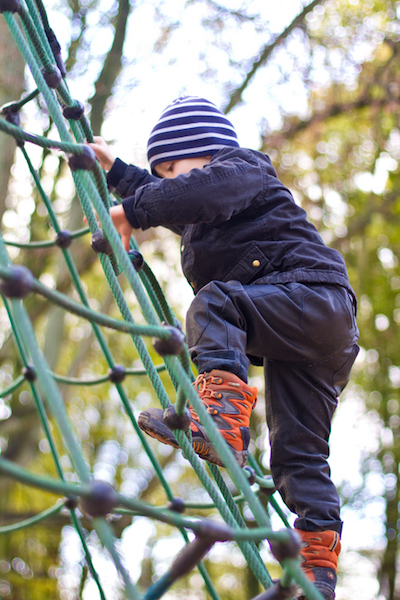Concussions on the playground. What’s a parent to do?
My kids are bona fide playground connoisseurs. They can tell you every park within a 15-mile radius of our house along with the pros and cons of the playground equipment found at each one. And that’s the way childhood should be- there should be plenty of opportunities for play in the lives of our little ones.
A new study published in the journal Pediatrics reminds us, though, that playgrounds aren’t just fun and games. Kids can get seriously injured on a playground, and one of the biggest concerns is that of a traumatic brain injury, such as a concussion.
Even a head injury that is considered “mild” and may not require intense medical intervention can have a profound impact on a child’s life. It can affect their academic performance, social functioning, emotional wellbeing and many other aspects of their ongoing mental and physical development, so let’s take a moment to discuss how we can help our kids navigate the playground safely.
What we’ve learned
Researchers took a look back at emergency room visits for kids over a 12-year period from 2001 to 2013.
Here’s what they found:
- Most playground injuries occurred in children between ages 5 and 9
- Boys were more likely to get hurt than girls
- The number of head injuries treated in the emergency room has increased since 2005
- Monkey bars, climbing equipment and swings were the most common cause of traumatic brain injuries
- Injuries were more likely to occur on weekdays and during the months of April, May and September
Traumatic brain injuries have been the topic of ongoing public debate within the last several years as concerns have grown over the safety of some professional sports, namely football, and the long-term risks of repeated head injuries have been identified. It’s difficult to tell whether children are experiencing a greater number of head injuries than in previous years or whether parents are getting better at recognizing them and are now more likely to seek medical help when the injury occurs.
This study shows us that children are more likely to sustain an injury at the playground on weekdays and certain months of the year. Although we can’t say for sure exactly why this occurs, we can speculate that perhaps it is due to children playing on playgrounds at school where there may be less direct adult supervision.
It’s also clear from this research that there are certain areas of a playground that are more dangerous than others- monkey bars, climbing equipment and swings- and perhaps these areas should be the focus of better safety measures.
What you can do to prevent injuries
Playgrounds are certainly safer than they used to be, but the numbers don’t lie. Every year approximately 214,000 visits to the emergency room occur after a child is injured on playground equipment, and 21,000 of those are head injuries.
Here are some things to keep in mind to promote safety on the playground:

-Be sure the ground underneath the play area is covered in a soft surface such as sand, mulch or wood chips.
-Use equipment that is appropriate for your child’s age.
-Seek a playground with a separate play area for children under five years old.
-Make sure the higher surfaces incorporate guard rails to prevent falls.
-Actively supervise kids on the playground.
-Teach children not to push, shove or crowd others while on the equipment.
-Engage your child in conversation about how they can make safe choices on the playground.
-Dress for the playground: avoid necklaces, scarves, drawstrings or purses that can get caught in equipment and cause strangulation.
-Check to make sure the playground equipment is well-maintained.
But- don’t go overboard
Safety is a real concern on the playground, but we also have to remember that playtime is an absolute necessity for healthy growth and development. Our kids need to be active, and they need to be able to test their boundaries and take risks. The playground is the place where they step out onto the stage and figure out what they’re made of. Each moment spent in play during childhood is precious and valuable and necessary.
Yet as much as playgrounds are a normal part of childhood, concussions aren’t. Our goal as parents is to allow our kids the opportunity to grow and develop, but provide appropriate boundaries to protect their health and safety. Sometimes that balance is very difficult to find, but we must continue to try!
Could your child be suffering from a concussion?
 Our multidisciplinary team of sports medicine clinicians works quickly to diagnose concussions and provide a personalized treatment plan for patients of all ages.
Our multidisciplinary team of sports medicine clinicians works quickly to diagnose concussions and provide a personalized treatment plan for patients of all ages.







